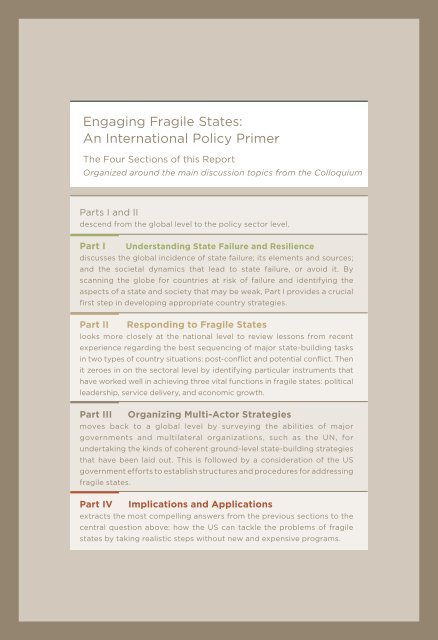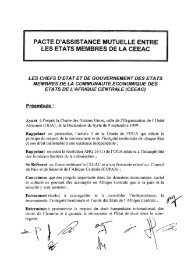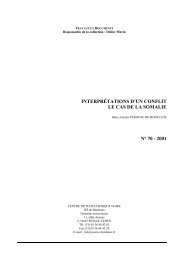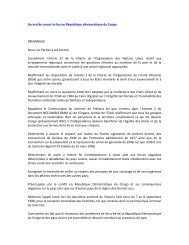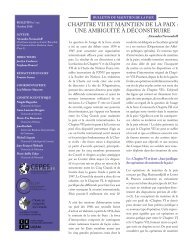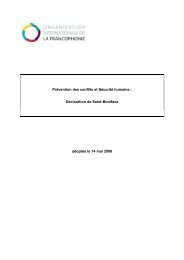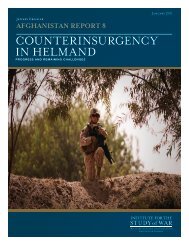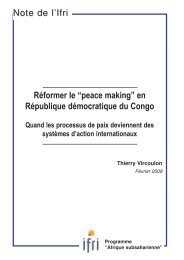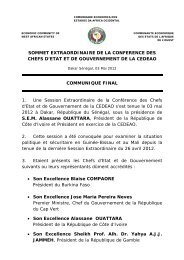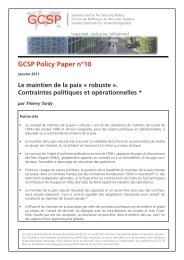engaging fragile states - Woodrow Wilson International Center for ...
engaging fragile states - Woodrow Wilson International Center for ...
engaging fragile states - Woodrow Wilson International Center for ...
You also want an ePaper? Increase the reach of your titles
YUMPU automatically turns print PDFs into web optimized ePapers that Google loves.
Engaging Fragile States:<br />
An <strong>International</strong> Policy Primer<br />
The Four Sections of this Report<br />
Organized around the main discussion topics from the Colloquium<br />
Parts I and II<br />
descend from the global level to the policy sector level.<br />
Part I Understanding State Failure and Resilience<br />
discusses the global incidence of state failure; its elements and sources;<br />
and the societal dynamics that lead to state failure, or avoid it. By<br />
scanning the globe <strong>for</strong> countries at risk of failure and identifying the<br />
aspects of a state and society that may be weak, Part I provides a crucial<br />
first step in developing appropriate country strategies.<br />
Part II Responding to Fragile States<br />
looks more closely at the national level to review lessons from recent<br />
experience regarding the best sequencing of major state-building tasks<br />
in two types of country situations: post-conflict and potential conflict. Then<br />
it zeroes in on the sectoral level by identifying particular instruments that<br />
have worked well in achieving three vital functions in <strong>fragile</strong> <strong>states</strong>: political<br />
leadership, service delivery, and economic growth.<br />
Part III Organizing Multi-Actor Strategies<br />
moves back to a global level by surveying the abilities of major<br />
governments and multilateral organizations, such as the UN, <strong>for</strong><br />
undertaking the kinds of coherent ground-level state-building strategies<br />
that have been laid out. This is followed by a consideration of the US<br />
government ef<strong>for</strong>ts to establish structures and procedures <strong>for</strong> addressing<br />
<strong>fragile</strong> <strong>states</strong>.<br />
Part IV Implications and Applications<br />
extracts the most compelling answers from the previous sections to the<br />
central question above: how the US can tackle the problems of <strong>fragile</strong><br />
<strong>states</strong> by taking realistic steps without new and expensive programs.<br />
Introduction: Threats Amid Overload | 11


